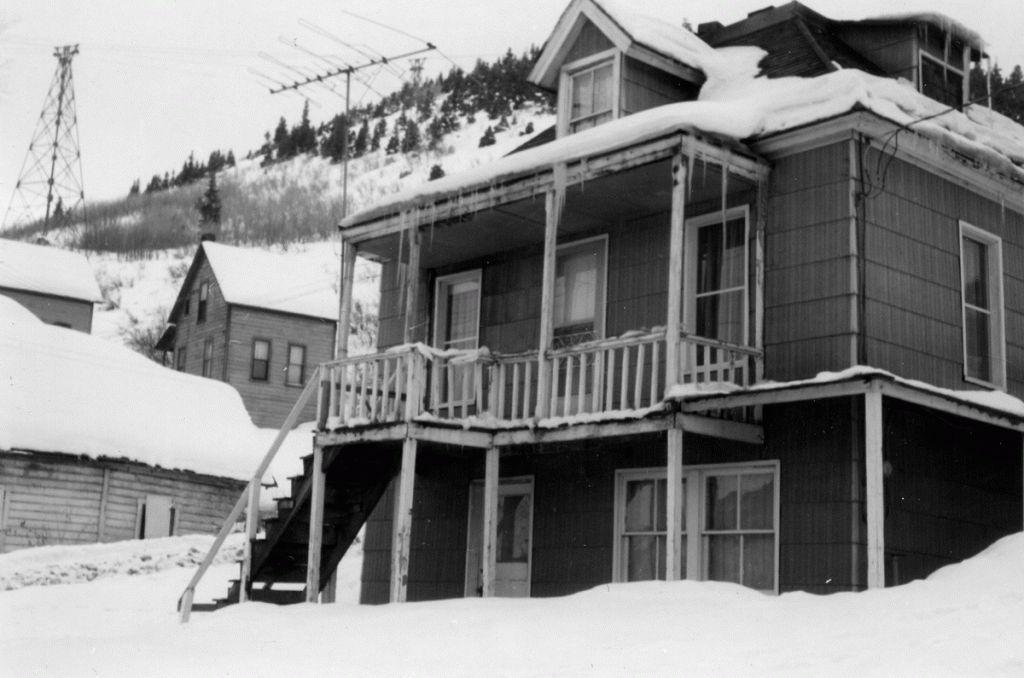The following is first-person oral history from Jim Hewitson as told to David Nicholas. It is the first article in an occasional series on Jim Hewitson’s life.
It is my opinion that as we get older (it happens) we become more reflective on our life’s journey. With this perspective, it now seems obvious to me that I was destined to carry on a family tradition. I am the third generation in my family to seek employment toiling below ground. You could say I was born to it.
Let’s review this generational lineage. My grandfather, Thomas Mark Hewitson Sr. (Mark), was a Master Machinist at the venerable Silver King Coalition Mine Company. He reported to Evan Smith. In Park City’s mining heyday, the Silver King was one of the “Big Four” mines. It rivaled the Ontario Mine for supremacy and created fortunes equal to or greater than those of both the Judge, Daly, and Daly West Mines.
The rank of Master Machinist represented an elite position at any mine. Achieving this ranking – both in prestige and income, required a mastery of all things mechanical. Besides being a tireless worker, my grandfather was brilliant. Mark worked at the Silver King from 1900 to 1931. He passed away at 61 years of age in 1931 – the victim of an infection easily curable with modern antibiotics.
Dad, Tom Hewitson, began his career working for the Oregon Short Line Railway (OSL) – a subsidiary of the Union Pacific Railroad (UP). The job entailed extended absences from home and frequent relocations. Suffice it to say that this lifestyle strained my parent’s marriage. Fortunately, my grandfather secured Dad a job with the Silver King. Displaying both common sense and a desire for self-preservation, Dad abandoned his railroad career and moved the family to Park City in 1931. Over the next 37 years Tom Hewitson mastered all his assignments including motorman, timberman, and hoistman.
It is a given that mining represents a dangerous avocation. I held no illusions otherwise. I learned this “reality” early in life. In November 1947 my father, through the benign negligence of others, suffered a life-threatening injury in the Alliance Tunnel at the Silver King Mine. Miraculously, he survived, eventually returning to full time employment. He retired in 1968. Another mining tragedy touched our family when my mother’s brother-in-law, Uncle Ted succumbed to “dead air” while working at the Judge Mine. This was not a profession for the faint of heart.

Credit: Park City Historical Society & Museum
I believe it is relevant to mention that I am the youngest of six children born to LaVon and Tom Hewitson. We lived at 803 Norfolk Avenue. My parents purchased the home in 1945 for $1,400. I have three older brothers and two older sisters. Mom and Dad expected us to excel both academically and professionally. Thank goodness we inherited their intellectual acumen and work ethic. I am proud to say that all six of us fulfilled their aspirations
At different times three of my older siblings worked full time in Park City’s mines – Reed, Bill, and Shirley. Reed (the oldest) worked first at the Silver King and then at the Mayflower. Bill worked for United Park City Mines. Shirley was the office manager for the New Park Mining Company. Eventually other employment opportunities beckoned them beyond the “mining life”. Not me. From the time I can remember I wanted to be a miner. The allure can best be described as a force compelling me toward a preordained destiny.
While I shouldn’t say what I am about to tell you I will anyway. From a young age I accompanied my father to work whenever circumstances would allow. The strictest safety protocols guided my every movement. Dad, my two older brothers and sister impressed upon me the need for an unwavering attention to detail and safety. In my chosen profession a catastrophic calamity was only a mistake away.
Be on the lookout for two more articles – one discussing a “unique” classroom setting and the other adventures regarding my first full-time mining job. Thank you for your time. I am looking forward to continuing our conversations.